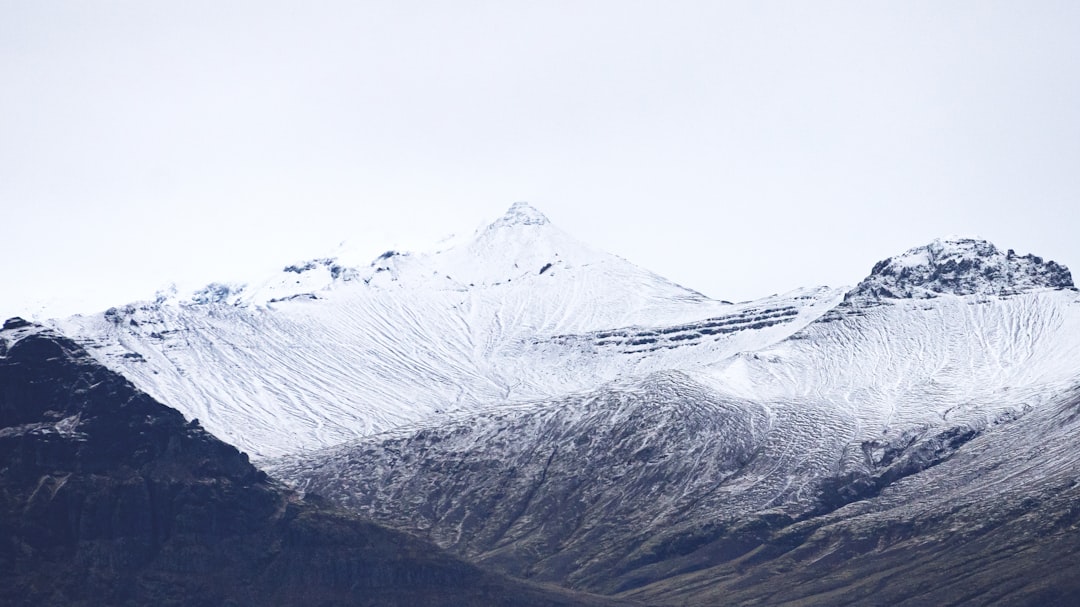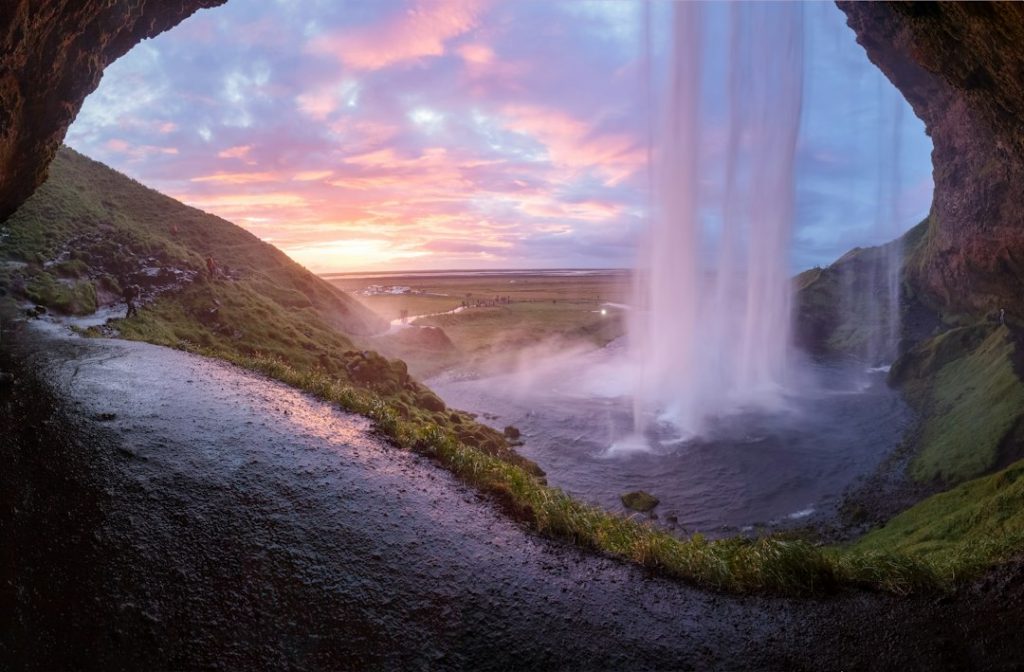
Climate Zones of Iceland: Different climate regions Of Iceland
Iceland is a country known for its diverse and unique climate zones. The island’s location near the Arctic Circle and its proximity to the Gulf Stream create a variety of weather patterns and temperature ranges. There are six main climate zones in Iceland, each with its own distinct characteristics and landscapes. These climate zones include the coastal, highland, arctic, subarctic, continental, and microclimates. Understanding the different climate zones in Iceland is essential for anyone planning to visit or explore the country, as it can greatly impact travel plans and outdoor activities.
Summary
- Iceland has diverse climate zones, each with its own unique characteristics and weather patterns.
- The Coastal Climate Zone experiences milder temperatures and more precipitation due to its proximity to the ocean.
- The Highland Climate Zone is characterized by cooler temperatures and less precipitation, making it a harsh environment for vegetation.
- The Arctic Climate Zone has extremely cold temperatures and is covered in ice and snow for most of the year.
- The Subarctic Climate Zone has cool summers and cold winters, with more precipitation than the Arctic Zone but less than the Coastal Zone.
The Coastal Climate Zone
The coastal climate zone in Iceland is characterized by mild temperatures and relatively high levels of precipitation. This climate zone is influenced by the warm waters of the Gulf Stream, which helps to moderate temperatures along the coast. The coastal areas of Iceland are home to lush green landscapes, abundant vegetation, and diverse wildlife. The mild climate also makes the coastal regions popular for outdoor activities such as hiking, birdwatching, and whale watching. The coastal climate zone is also where the majority of Iceland’s population resides, with the capital city of Reykjavik located in this region.
In addition to its mild temperatures, the coastal climate zone experiences frequent and often unpredictable weather changes. Visitors to this region should be prepared for sudden shifts in weather, including rain, wind, and fog. Despite the variability in weather, the coastal climate zone offers stunning natural beauty and a wide range of outdoor adventures for visitors to enjoy.
The Highland Climate Zone
The highland climate zone in Iceland is characterized by its rugged and barren landscapes, with vast expanses of volcanic rock, glaciers, and geothermal activity. This region experiences cooler temperatures and lower levels of precipitation compared to the coastal areas. The highlands are also home to some of Iceland’s most iconic natural attractions, including the Highlands National Park, Landmannalaugar, and Thorsmork. These areas are popular for hiking, camping, and exploring the unique geological features of the region.
The highland climate zone is known for its extreme and rapidly changing weather conditions. Visitors to this region should be prepared for harsh winds, sudden storms, and rapidly changing temperatures. Due to its remote and challenging terrain, the highlands are best explored with a knowledgeable guide or as part of a guided tour. Despite the harsh conditions, the highland climate zone offers unparalleled opportunities for adventure and exploration in some of Iceland’s most dramatic landscapes.
The Arctic Climate Zone
The arctic climate zone in Iceland is found in the northernmost parts of the country, where temperatures are consistently cold throughout the year. This region experiences long, dark winters and short, cool summers. The arctic climate zone is home to unique wildlife such as polar bears, arctic foxes, and migratory birds. The landscape is characterized by tundra vegetation, permafrost, and snow-covered mountains.
Visitors to the arctic climate zone can experience the natural beauty of Iceland’s northernmost regions, including the remote Westfjords and the island of Grimsey, which straddles the Arctic Circle. The arctic climate zone offers a chance to witness the stunning phenomenon of the midnight sun during the summer months and the northern lights during the winter. Despite its remote location and challenging weather conditions, the arctic climate zone provides a truly unforgettable experience for those willing to venture to Iceland’s northernmost reaches.
The Subarctic Climate Zone
The subarctic climate zone in Iceland is found in the northern and eastern parts of the country, where temperatures are cooler than in the coastal regions but milder than in the arctic zone. This region experiences distinct seasons, with cold winters and relatively warm summers. The subarctic climate zone is home to diverse landscapes, including fjords, mountains, and forests. The region is also known for its rich cultural heritage and traditional fishing villages.
Visitors to the subarctic climate zone can explore the stunning natural beauty of places like Lake Myvatn, Dettifoss waterfall, and the volcanic area of Krafla. The subarctic climate zone offers opportunities for outdoor activities such as hiking, birdwatching, and exploring geothermal areas. The region’s unique blend of natural beauty and cultural heritage makes it a popular destination for those seeking an authentic Icelandic experience.
The Continental Climate Zone
The continental climate zone in Iceland is found in the interior parts of the country, where temperatures can vary greatly between summer and winter. This region experiences cold winters with heavy snowfall and warm summers with long daylight hours. The continental climate zone is home to diverse landscapes, including forests, lakes, and rivers. The region is also known for its rich biodiversity and unique flora and fauna.
Visitors to the continental climate zone can explore the stunning natural beauty of places like Thingvellir National Park, Gullfoss waterfall, and Haukadalur geothermal area. The continental climate zone offers opportunities for outdoor activities such as fishing, horseback riding, and exploring historic sites. The region’s diverse landscapes and unique climate make it a popular destination for those seeking an immersive Icelandic experience.
The Microclimates of Iceland
In addition to the main climate zones, Iceland is also home to a variety of microclimates that can be found throughout the country. These microclimates are influenced by factors such as altitude, proximity to water, and local geography. Microclimates can create unique weather patterns and temperature variations within relatively small areas.
Some examples of microclimates in Iceland include the warmer temperatures found in sheltered valleys or near geothermal areas, as well as cooler temperatures at higher elevations or in exposed coastal areas. These microclimates can create diverse ecosystems and support a wide range of plant and animal species. Visitors to Iceland may encounter these microclimates as they explore different regions of the country, each offering its own distinct natural beauty and outdoor activities.
In conclusion, Iceland’s diverse climate zones offer a wide range of natural beauty and outdoor adventures for visitors to explore. From the mild temperatures of the coastal regions to the extreme conditions of the highlands and arctic zones, Iceland’s climate zones provide a unique opportunity to experience some of the most dramatic landscapes on Earth. Whether seeking adventure in remote wilderness areas or immersing oneself in rich cultural heritage, Iceland’s climate zones offer something for every type of traveller. Understanding these climate zones is essential for anyone planning to visit Iceland, as it can greatly enhance their experience and appreciation of this remarkable country.
FAQs
What are the different climate zones of Iceland?
Iceland has three main climate zones: the coastal area, the highlands, and the interior. The coastal area experiences a maritime climate with mild winters and cool summers. The highlands have a subarctic climate with cold winters and cool summers. The interior has a tundra climate with long, cold winters and short, cool summers.
What factors contribute to the different climate zones in Iceland?
The different climate zones in Iceland are influenced by its high latitude, proximity to the Arctic Circle, and the warming effects of the North Atlantic Current. The country’s diverse topography, including mountains, glaciers, and coastal plains, also play a role in shaping its climate zones.
How do the climate zones of Iceland affect its flora and fauna?
The varied climate zones in Iceland support a diverse range of flora and fauna. The coastal areas are home to grasslands, shrubs, and seabird colonies, while the highlands and interior support mosses, lichens, and hardy plant species. The different climate zones also provide habitats for a variety of bird species, mammals, and marine life.
What are the main characteristics of each climate zone in Iceland?
The coastal area of Iceland has mild, wet winters and cool, relatively dry summers. The highlands experience long, cold winters with heavy snowfall and short, cool summers. The interior has a harsh climate with extremely cold winters, little precipitation, and short, cool summers.
How does the climate of Iceland impact tourism and outdoor activities?
The diverse climate zones of Iceland offer a wide range of outdoor activities for tourists, including hiking, birdwatching, and glacier exploration. The coastal areas provide opportunities for whale watching and coastal walks, while the highlands and interior offer unique experiences such as ice cave tours and hot spring bathing. The climate also influences the best times of year to visit different regions of Iceland for specific activities.


